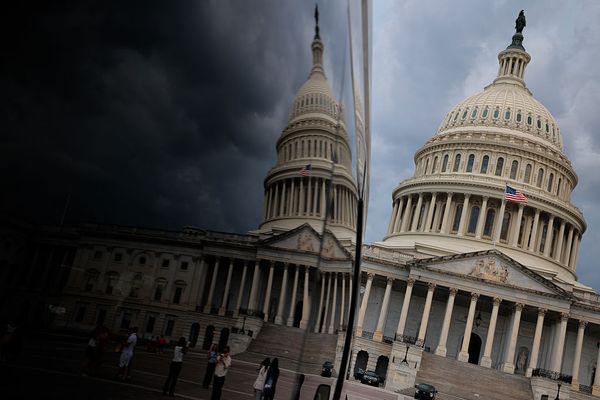
Mistakes in recent public finances data mean government borrowing has been overstated by a cumulative £3bn, the Office for National Statistics has said.
In a fillip that gives Rachel Reeves a little bit more wriggle room in her November budget, the ONS said its estimates of public borrowing had been out by £200m-£500m a month since January.
While a welcome development for the chancellor, the revision is the latest sign of deep problems with the quality of economic data in the UK that have piled pressure on officials trying to get a clear picture to guide decision-making.
In a notice published on Wednesday, the ONS blamed a mistake in the VAT receipts data supplied by the tax authorities for the errors in its most recent tax and spending figures that were published on 19 September.
The mistake means public borrowing for the fiscal year ending March 2025 was £1bn lower than the ONS had previously suggested – and so far this financial year, April-August, it is £2bn lower.
A table published alongside the error notice showed that public borrowing was still running ahead of the March forecasts from the Office for Budget Responsibility (OBR) – but by less than previously estimated.
Government borrowing in the first five months of the current fiscal year to August was £81.8bn. That was down from the £83.8bn figure published in September.
The current budget deficit, excluding investment, which Reeves wants to eliminate, was £60bn in the year so far – down from £62bn – though that remained much higher than the £46.6bn expected by the OBR.
Full details will be incorporated in the next public finances data, due to be published on 21 October, the ONS said.
Reeves is still expected to announce tax rises in her budget next month to plug a spending gap estimated at between £20bn and £40bn, amid an expected productivity downgrade by the OBR and a series of policy reversals, including scrapping plans for welfare cuts.
The new data will be incorporated in the second iteration of the OBR’s forecasts, due to be sent to the chancellor on 20 October, after a first estimate dropped on Reeves’s desk last Friday.
One former Treasury insider suggested the mishap may have come to light as the OBR combed through the fine details of the latest government data as part of the forecasting process.
HM Revenue and Customs acknowledged its mistake in a statement, saying it had “identified an error in our VAT cash receipts outturn which impacts provisional 2025 to 2026 year-to-date receipts”, adding: “VAT cash receipts from April 2025 to August 2025 have been increased by £2.4bn.”
While HMRC took responsibility for the error, it was the latest in a long line of revisions by the ONS, which has come under intense pressure over the reliability of its statistics since the Covid pandemic.
Jobs market data in particular has come under scrutiny from policymakers, after collapsing response rates to the surveys that the ONS uses to compile the figures.
Bank of England governor Andrew Bailey has previously described the unreliability of ONS data as a “substantial problem” for policymakers. Analysis of other labour market data by the Resolution Foundation thinktank has suggested the official figures may have “lost” almost a million workers.
Rob Wood, economist at consultancy Pantheon Macroeconomics, said in the light of the ONS statement, “this latest correction is a good reason to take all official data with a pinch of salt for now”.







